
Sup244
Frame Deflate Transfer Syntax
This Supplement adds a new Transfer Syntax primarily for
single bit segmentation encoding, which is otherwise not
well supported.
There is a need to be able to store and transfer encoded
single frames (such as for DICOMweb) rather than the
entire dataset for those applications where only selected
frames of a multi-frame object are required (such as for
selected tiles at selected resolutions for whole slide
images that have been segmented, or multi-organ
segmentations of large volumetric CT or MR
datasets).
Currently, the DICOM standard supports a means of single
bit representation of binary segmentations with a Bits
Stored and Bits Al- located of 1, and these can grow
extremely large, especially when segmenting at the full
resolution of the underlying image (e.g., for whole slide
imaging).
If compressed, they need to be mathematically reversibly
(losslessly) compressed. The existing Deflate Transfer
Syntax (algorithm used in zip and gzip) is reasonably
effective, but applies to the entire data set (including
the "metadata" and all the frames treated as a single
stream).
Frame-based pixel data compression schemes currently in
the standard generally do not support single-bit, with the
exception of RLE and J2K (CP 2301), neither of which
achieves as high a compression ratio as Deflate does for
segmentation data.
Other alternative lossless compression codecs designed for
single bit use (such as for fax using CCITT Group 4 (ITU-T
T.6), JBIG, or JBIG2) were considered, which though they
compress more effectively, were not considered widely
enough supported to justify the complexity for this use
case at this time. Other general purpose compressors do
slightly better than Deflate, but again, not so much
better that they justify their addition to the standard at
this time, though they may be considered in future if
other use cases justify them.
This supplement was voted ready for Final Text and
publication in the 2025a edition of the standard.
View slideset »
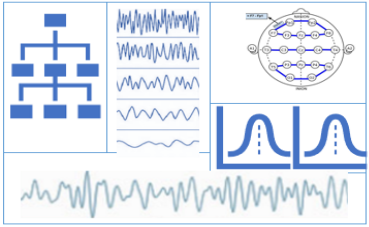
Sup236
Waveform Presentation State
This supplement introduces Service Classes for
storage and exchange of presentation information for
DICOM waveform objects by adding a Waveform
Presentation State IOD. The Waveform Presentation
State object stores the display montages,
i.e. calculative combinations of recorded channels,
display filter and other display properties as well
as arbitrary Annotations.
This supplement adds
- a new Waveform Presentation State IE.
- a SOP Class to store Waveform Presentation States and the related Modules.
- amends the Basic Directory IOD by adding Waveform Presentation as a new Directory Type
In cardiology, technicians annotate previously recorded waveforms (e.g. from home monitoring Holter ECG) and highlights areas of interest. This information is essential input for the cardiologist who reviews the ECG and finally provides the report.
Waveform objects support limited display information, which has to be provided within the recorded waveforms. These Attributes only cover color and scaling of waveform channels.
A Waveform Presentation State object provides simple textual annotations, segments of interest, montages including filters, colors, gain, and display scale for a given recording (patient related).
In neurophysiology a montage defines a list of channels for visualization of the data which is created by a list of original channel sources and the method for their mathematical (linear) recombination.
Waveform annotations are textual or coded markers assigned to a specific timepoint or time range, related to all channels or a selected set of channels. Annotations could be observations as well as measurements.
This supplement was voted ready for Final Text and publication in the 2025a edition of the standard.
View details »
View slideset »
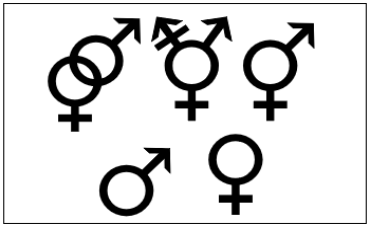
Sup233
Patient Model Gender Enhancements
This supplement adds a comprehensive gender logical model for sex and
gender representation in DICOM.
This facilitates communication between DICOM and the
various HL7 systems.
The goal is to make the distinction between phenotypical
sex and the patient's social context gender clear.
The approach is to add new optional sequences to the
Patient Study Module.
The DICOM model extensions are consistent with the work in
HL7 and FHIR:
- The HL7 Gender Harmony Project created a logical model to describe
the information needed in an electronic record to support proper
care for gender and sex diverse patients.
- The HL7 model includes both clinical information and
social information.
This supplement also updates Patient Sex (0010,0040) description and
some CIDs to match the HL-7 updated definition.
This supplement was voted ready to go out for Letter Ballot.
View slideset »

Sup241
Structural Heart SR Template
This supplement introduces SR templates for
Structural Heart Procedures.
These procedures involve interventions aimed at
addressing various conditions or abnormalities
affecting the structures of the heart, excluding the
coronary arteries.
Unlike open-heart surgery, these interventions are
characterized by their minimally invasive nature or
catheter-based approach.
Periprocedural imaging follows a consistent pattern
of three phases: pre-operative assessment,
intraprocedural assessment, and follow-up.
Throughout all three phases, echocardiography
emerges as the primary imaging modality.
X-ray angiography is predominantly utilized for
intraprocedural guidance.
CT may also find application in the pre-operative
assessment and follow-up.
The templates proposed in the supplement are based
the Simplified Adult Echocardiography Templates
(root TID 5300), modified to support multimodality
image acquisition.
Structural Heart Procedures include:
- TAVI: Transcatheter Aortic Valve implantation
- TAVR: Transcatheter Aortic Valve Replacement
- TTVP: Transcatheter Tricuspid Valve Procedure
- TTVR: Transcatheter Tricuspid Valve Repair
- TEER: Transcatheter Edge-to-Edge Repair
- TMVR/TMVr Transcatheter Mitral Valve Replacement
- LAAC: Left Atrial Appendage Closure
This supplement was voted ready to go out for Letter Ballot.
View details »
View slideset »
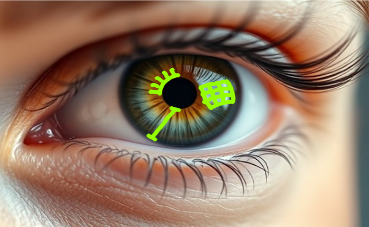
Sup247
Eyecare measurements templates
This Supplement proposes to add templates, context groups,
and coded vocabulary for eyecare measurements to the
Standard.
These templates may be used in either SR documents, or for
structured content in an Encapsulated PDF object.
The focus of this Supplement is the set of “key”
measurements clinically important for patient care. These
are not intended to be a comprehensive set of ophthalmic
measurements, although the extensible context groups and
templates allow additional measurements beyond the
specified key measurements to be included in SOP
Instances.
There is tension in clinical documentation between the
needs for structured discrete data and human-readable
content. In DICOM, discrete data is generally sent using
Structured Reporting, and ready for display rendered data
may be sent in an Encapsulated PDF.
A given set of measurements may be sent in objects in both
formats, with cross-reference to the other object using
the Referenced Instance Sequence (0008,114A); note that
the cross-reference is to an instance as a whole, not to
individual measurements. Alternatively, discrete
measurements may be included in an Encapsulated PDF object
in the SR-like Content Sequence (0040,A730).
The Templates defined in this Supplement may be used in
either object type.
The DICOM Standard does not recommend the use of any
particular approach to meeting the clinical documentation
needs of the users.
Such recommendation may be made by a professional society
or a standards profiling effort. For example, the American
Academy of Ophthalmology and the IHE Eyecare domain,
considering the need to integrate legacy PDF-based
systems, have in the past recommended use of Encapsulated
PDF with the included SR-like Content Sequence for basic
interoperability, but those recommendations may not meet
all use cases in the evolving interoperable healthcare IT
environment.
This supplement was voted ready to go out for Public Comment.
View slideset »
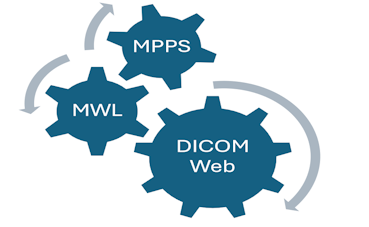
Sup246
DICOMWeb Modality Workflow Services
The DICOMweb Modality Workflow Services extends the
existing DICOMweb services, mimicking the Modality
Worklist (MWL) and Modality Performed Procedure Step
(MPPS) services that are already available in
DIMSE with a RESTful web-interface.
It has been designed with the intention of facilitating
proxies from/to DIMSE to/from DICOMweb Modality Workflow
Services.
This supplement will be further presented and
discussed in WG06 before going out for Public
Comments.
View slideset »
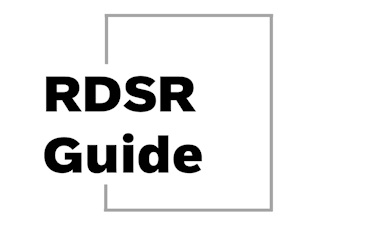
Sup245
RDSR Informative Annex
This Supplement provides explanatory information on
the creation and usage of RDSR (traditional and
enhanced) within Angiography, Mammography,
Radiography, CT, Dentistry modalities etc.
This supplement excludes Radiopharmaceutical and
Patient Radiation Dose SR.
Given the modality-specific content definition of
the RDSR, and the many different types of system
configurations existing in the field, it becomes
challenging for the manufacturers to have a clear
understanding of the precise requirements for each
type of device.
The purpose of this supplement can be summarized as
follows:
- Give more information beyond the definitions
in PS 3.16: describe real-world scenarios of
typical equipment configurations, provide
examples and encoding guidelines;
- Indicate restrictions on the applicable
scenarios (defined terms recommended, values
ranges, recommended presence of Content
Items);
- Promote usage of optional Content Items
under particular scenarios;
- Assess the applicability for some
conditional Content Items under particular
scenarios;
The scope of the proposed Supplement includes:
- An overview of the landscape of different
modalities and types of equipment
configuration, from simple legacy CR to
modern integrated Angio equipment.
- Guidance on how to use the different TIDs
and Content Items depending on the modality,
equipment types and configurations.
This supplement will be further presented and
discussed in the base standard group before going
out for Public Comments.
View slideset »